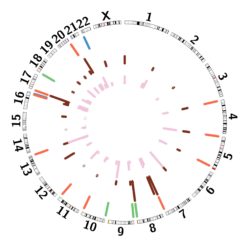The Research Software Group’s mission is rooted in the observation that most current research requires software, often written by researchers themselves, and that the application of a few core software engineering principles leads to more effective research. This is neatly captured by the Software Sustainability Institute‘s tag line: “better software, better research”. A core technology … Continue reading “The value of version control”
Tag: storage
Investigating the Alternative Lengthening of Telomeres (ALT)
In this case study we hear from Ronan and Anubrata, both research staff in Cancer and Genomic Sciences, who have been using BlueBEAR to find therapeutic targets and biomarkers for the diagnosis of ALT-reliant cancers such as high-grade glioma. Our lab is investigating the Alternative Lengthening of Telomeres (ALT) process; a molecular mechanism used by … Continue reading “Investigating the Alternative Lengthening of Telomeres (ALT)”
Energy Data Landscape – Challenges and Opportunities
Edward Barbour and Grant Wilson, Associate Professors in Chemical Engineering, explored detailed domestic heat pump demand data and became interested in their operational costs under different energy tariffs. They quickly discovered that tariff data was difficult to obtain and compare across different suppliers. With help from Mingxue (Jean) Du, a Research Software Engineer, they identified … Continue reading “Energy Data Landscape – Challenges and Opportunities”
SMLM Data Exploration with Nano-org and BlueBEAR
This case study highlights the ongoing collaboration between the Research Software Group, Professor Dylan Owen, and Dr Sandeep Shirgill in the development of Nano-org. Nano-org has recently been published in Nature Communications. Nano-org uses ultra-precise coordinate data to represent the nanoscale distributions of individual proteins within cells. The unique functionality provided by Nano-org supports a … Continue reading “SMLM Data Exploration with Nano-org and BlueBEAR”
How green is the BEAR? 2025 updates
In 2022, we took part in the University’s Sustainability Town Hall and published a blog post highlighting Advanced Research Computing’s efforts in sustainable computing over the previous decade. Since then, we’ve continued to explore and develop initiatives in this space. With growing concerns around the energy demands of data centres – such as a recent … Continue reading “How green is the BEAR? 2025 updates”
Bayesian Modelling of Rising Decision Thresholds in DDMs using BlueBEAR
In this case study we hear from Sophie Wetz, a Masters student in Psychology, who has been using BlueBEAR to investigate whether a dynamic, rising boundary improved the fit of the full Drift Diffusion Model (DDM) to Random Dot Kinematogram (RDK) task data. I’m a Master’s student on the Computational Neuroscience stream in the School … Continue reading “Bayesian Modelling of Rising Decision Thresholds in DDMs using BlueBEAR”
Atomic Simulation to Build Better Batteries
In this case study we hear from Oskar Soulas, a PhD student in Chemistry, who has been using BlueBEAR to investigate lithium–sulphur–nitrogen solid electrolytes for next-generation battery technologies. I am a second year PhD student in the Scanlon Materials Theory Group (SMTG) based at the University of Birmingham. The group uses powerful computational tools to understand … Continue reading “Atomic Simulation to Build Better Batteries”
Bio-inspired FSI and HPC-driven aerodynamic optimisation
In this case study we hear from Hibah Saddal, a PhD student in Aerospace Engineering, who is using BlueBEAR to optimise aerodynamic performance. At the 14th BEAR Conference 2025, I had the opportunity to present my research carried out with my PhD advisor, Dr Chandan Bose, on bio-inspired fluid-structure interaction (FSI) problems, where we leveraged … Continue reading “Bio-inspired FSI and HPC-driven aerodynamic optimisation”
BEAR helps delve into the infant gut and malnutrition
In this case study we talk to Leon, a PhD student in the Department of Microbes, Infection and Microbiomes, who is using bioinformatics of microbes that encompass the human gut microbiome. The human gut is inhabited by trillions of microbial cells and most of those cells have very important roles in human health. My work … Continue reading “BEAR helps delve into the infant gut and malnutrition”
Using BEAR to peel back the layers on potato genetics
In this case study we talk to Jack, a PhD student in Biosciences, who is using bioinformatics to understand plant genetics. I am a PhD student working in plant sciences supervised by Dr Lindsey Compton. My research focuses on using bioinformatics to understand plant genetics. Canopy architecture traits, like height and area, impact photosynthesis, drought … Continue reading “Using BEAR to peel back the layers on potato genetics”










